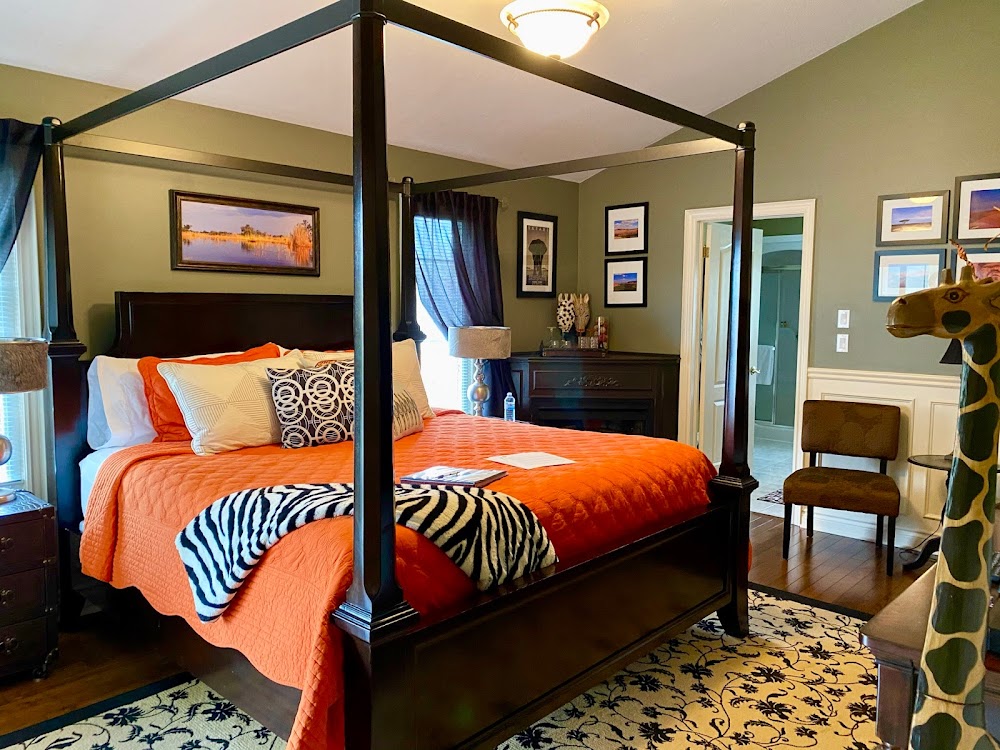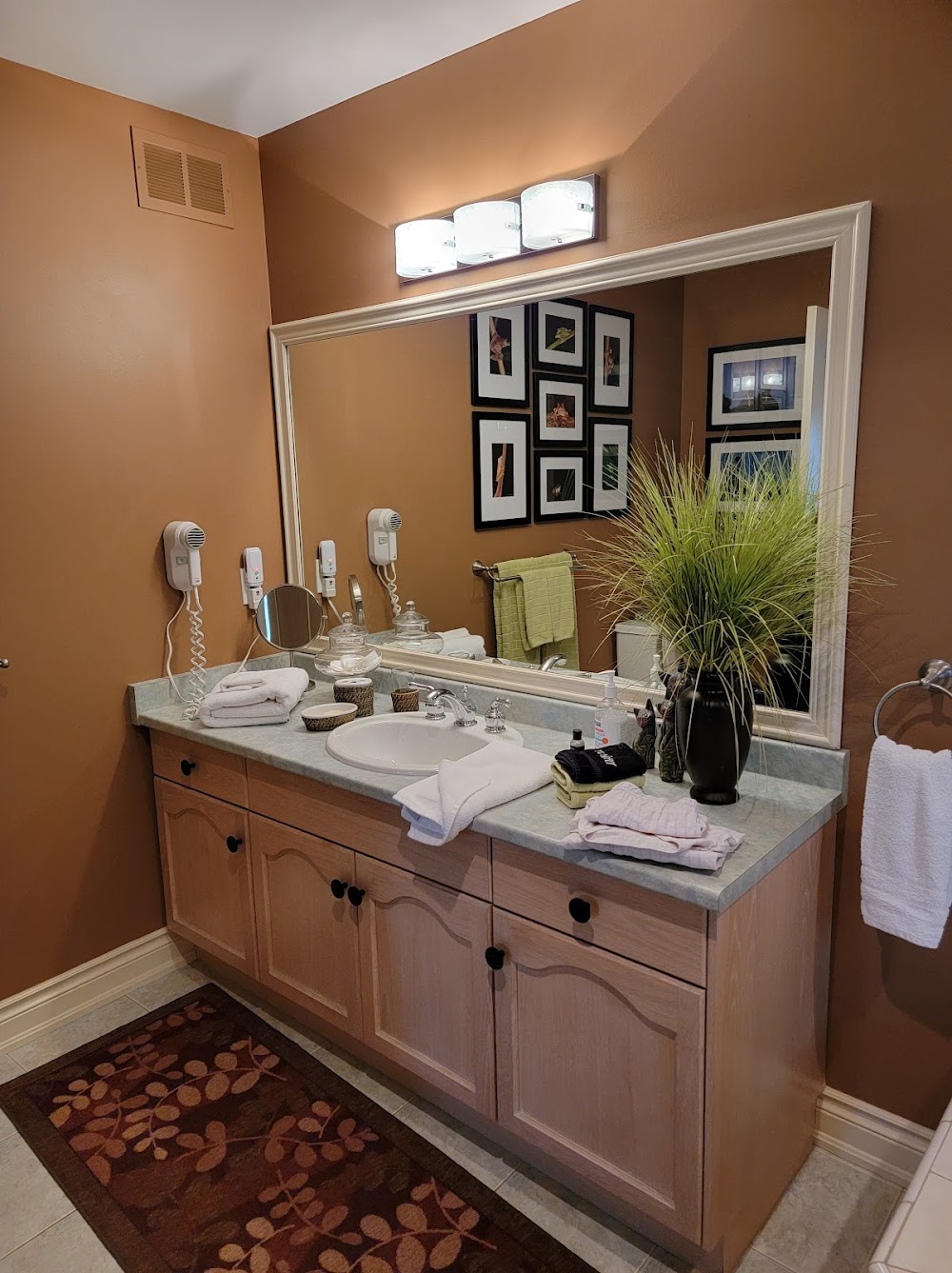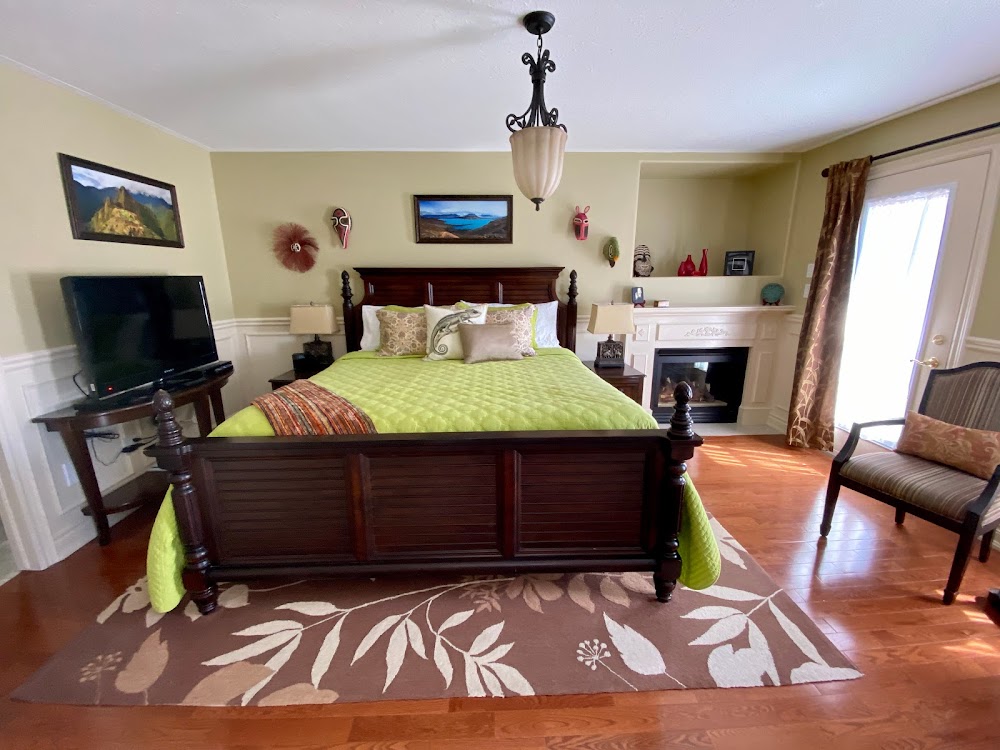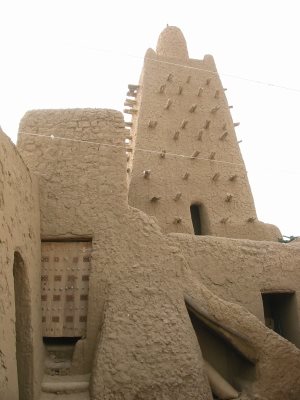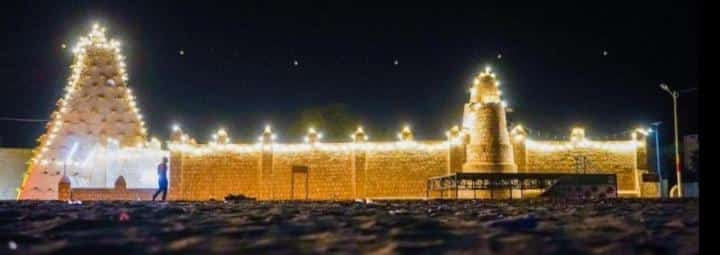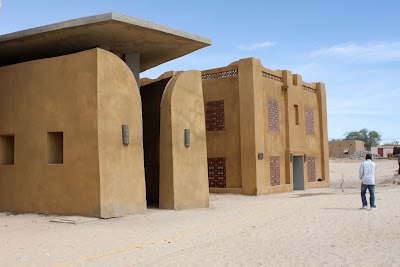House of Explorers (Maison des Explorateurs)
Overview
In the heart of the historic **Tombouctou Region** in Mali, where ancient trade routes once thrived with merchants and scholars, lies the renowned **Explorer House**, affectionately known as the **House of Explorers**. This architectural gem stands as a testament to the region's rich cultural tapestry and its enduring spirit of discovery.
Constructed in the early **19th century**, the Explorer House emerged during a time when the allure of **Timbuktu's libraries and universities** attracted explorers and intellectuals from around the globe. Its design, conceived by skilled Malian artisans and builders, seamlessly blends traditional **Sudano-Sahelian** and **Islamic architecture**. Built from locally sourced materials, the house emphasizes sustainability and harmonizes beautifully with its desert surroundings.
The most striking element of the Explorer House is its grand facade, crafted from **mud bricks** and finished with a plaster-like substance known as **"banc,"** giving it a distinctive reddish-brown hue. This traditional building technique not only provides exceptional insulation against the harsh desert climate but also ensures a comfortable environment, keeping the house cool during scorching days and warm during chilly nights.
Upon entering, visitors are welcomed into an expansive **courtyard**—a hallmark of Malian homes—serving as a communal space for gatherings and relaxation. Intricate geometric patterns and elegant Arabic calligraphy adorn the courtyard, celebrating the region's Islamic heritage. At its center, a lush garden featuring **date palms** and **acacia trees** offers a refreshing oasis amidst the arid landscape.
The interiors of the Explorer House harmonize practicality with artistry. Vibrant murals depicting historical scenes and maps narrate the journeys of famous explorers who traversed the Sahara and beyond. The ceilings, supported by timber beams from native **baobab trees**, are intricately carved with motifs symbolizing the unity and resilience of the Malian people.
Inside, the house is divided into several rooms, each catering to the needs of the explorers and scholars who frequented this residence. The **library**, perhaps the most significant room, houses an extensive collection of manuscripts and books, some dating back to the **15th century**. Written in both Arabic and various local languages, these texts span a diverse range of subjects, from astronomy and mathematics to poetry and medicine, reflecting the era's intellectual richness.
Another notable room is the **Majlis**, or sitting room, where guests and residents would engage in lively discussions and debates. This space is furnished with low wooden sofas adorned with colorful woven fabrics and cushions, creating a warm and inviting atmosphere. Traditional lanterns hanging from the ceiling cast a gentle glow, fostering contemplation and camaraderie.
The construction of the Explorer House was a true **community effort**, bringing together local builders, artisans, and laborers to create a hub of knowledge and exploration. The bricks were meticulously molded by hand and sun-dried, requiring patience and precision. Women from the community played a pivotal role in decorating the interiors, showcasing their talents in painting and embroidery to add the unique charm that characterizes the house.
Over the years, the Explorer House has undergone several restorations to maintain its historical integrity while adapting to modern needs. In the late **20th century**, international collaborations with organizations dedicated to cultural heritage ensured that the house remained a vibrant part of the Tombouctou Region's landscape. Today, it continues to serve as a **museum** and **cultural center**, allowing visitors to immerse themselves in the history and legacy of exploration in Mali.
Today, the Explorer House stands as a powerful symbol of the enduring spirit of knowledge and discovery in the Tombouctou Region. Its walls resonate with stories from a time when the pursuit of knowledge bridged cultures and united people. As the sun sets over the vast **Sahara**, the silhouette of the house serves as a poignant reminder of the rich heritage and unyielding quest for understanding that define this remarkable region.



